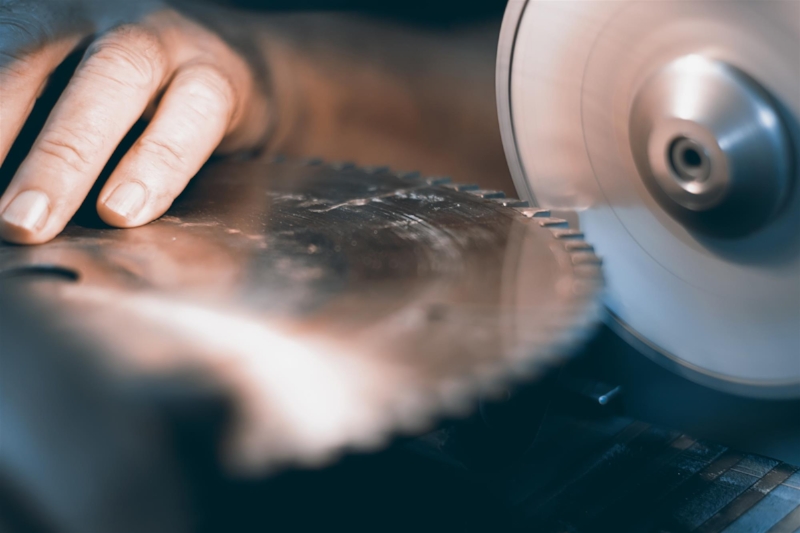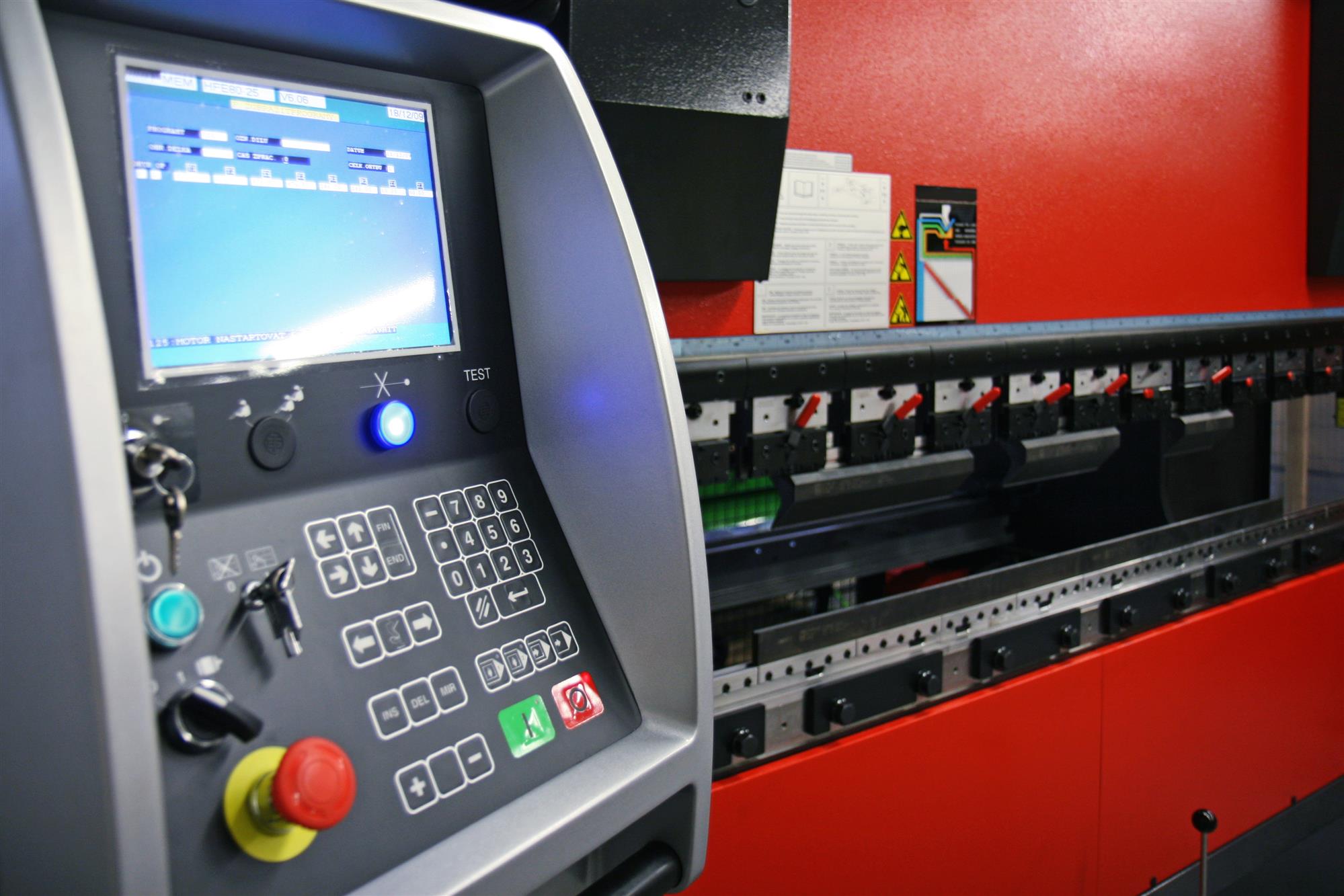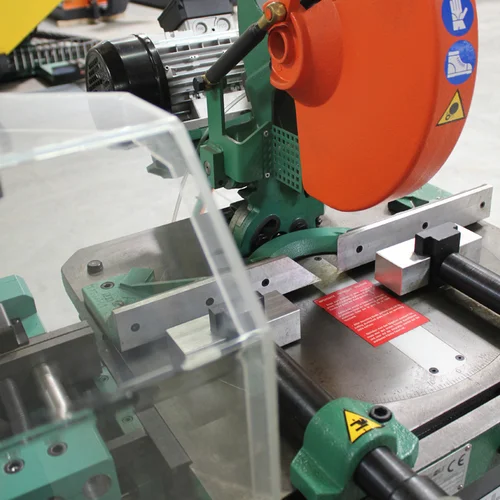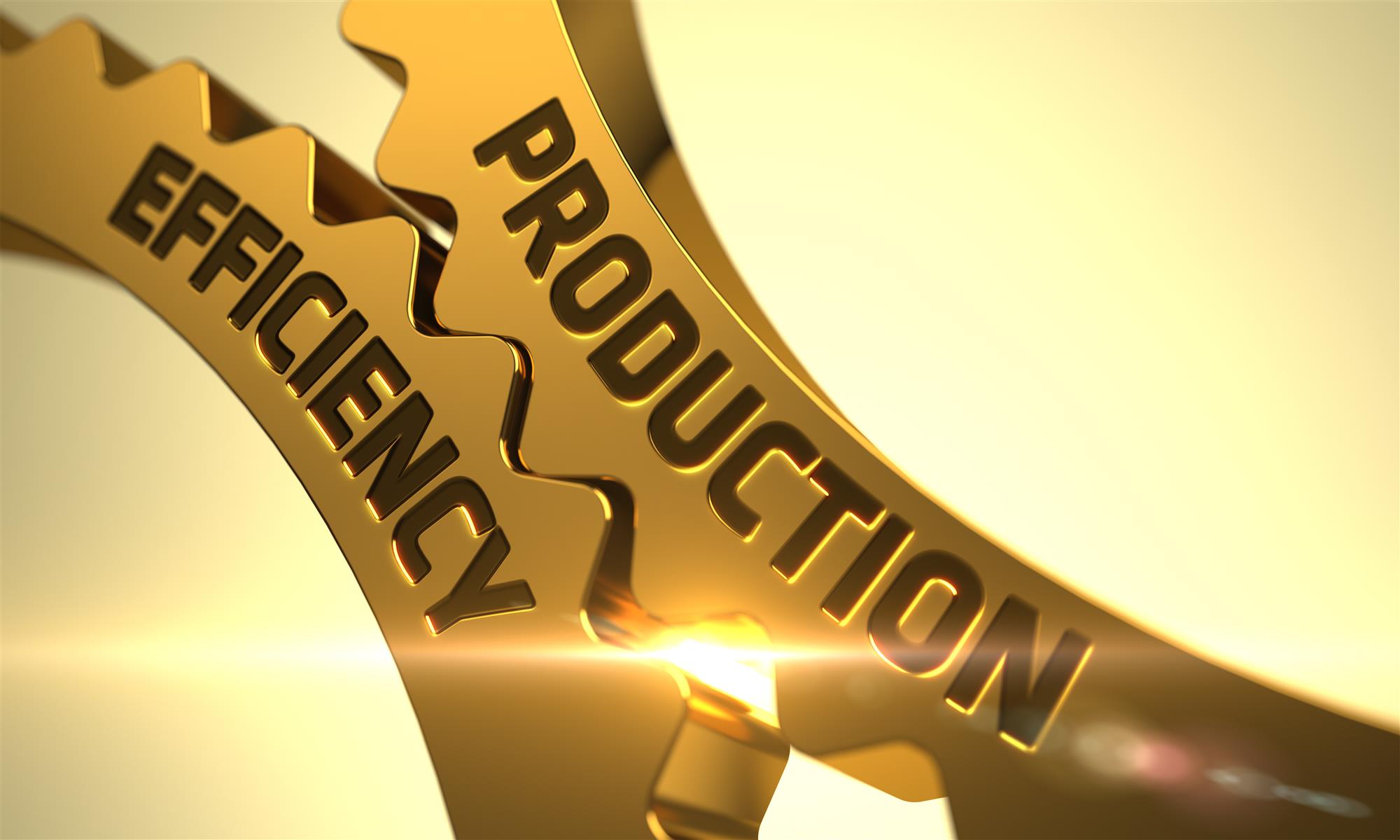Signs You Need to Sharpen Your Blade
Ever wonder when the best time is to sharpen the blade on your cold or band saw? Check out what signs to look for from Quantum Machinery and never guess again.
Band saw blades don’t stay sharp forever. After a while, the sharpness dulls, and the table band saw or other equipment you use no longer works as well as it once did. The best way to ward off poor performance or injuries is to keep your tools sharpened. In this short guide, we’ll teach you how to recognize the signs of a dull band saw blade so you can fix issues before they become a problem.
Material Gets Chipped
Is your material chipping when you use your blade? That’s a sign that your blade may be dull. Pieces chip off and become jagged, leaving an uneven cut and unsightly marks behind. When this happens, you need to be sure your blade is on track and get it sharpened immediately. Letting it continue to make chips will only wear out the blade completely, forcing you to purchase a replacement. Worse yet, you could even be struck or cut by a piece of material.
Excessively Loud Saw Noises
A saw with a sharpened and working blade handles its job much more quietly. Louder machine noises translate into evidence that your machine requires more work to handle the cuts. The amperage increases, and the loud buzz of the machine catches your ear. Listen to your machine to determine if it’s working right or in need of a tune-up.
The Blade Has Rounded Edges or Chipped Teeth
Saw blades have sharp edges without any chips. Each of the teeth is uniform in shape. When your blade looks like this, you know it is in good working order. As soon as you notice one tooth with a rounded edge or a chip, you know the blade is becoming dull and unusable. Check your saw blade over carefully each time you use it. Examine the teeth closely to determine if it is in proper working condition or if you need to sharpen it instead.
Burn Marks Appear on the Material
When the blade has to work overtime to make its cuts, it can overheat and burn the material. Burn marks that appear on your material indicate a dull blade that needs to get re-centered and re-sharpened. Never continue with your cuts if you notice these marks. It is important that you stop what you are doing immediately and make the necessary changes so no further damage is done.
Before you sharpen any blade, be sure to clean it first. Getting rid of the dust and grime could help make your steel saw sharper than ever. Look for these signs before each use, and after you clean, to see if the blade needs any maintenance. Need assistance with a machine or blade? Contact Quantum Machinery Group today for a one-on-one consultation.
Should You Buy a Hydraulic, Hybrid, or All-Electric Press Brake?
Hydraulic, hybrid, or all-electric press brake? Quantum Machinery shares details about each one to help you choose the best one to buy for your company.
Press brake machines have made remarkable advances due to changes in technologies over the past decade. If your current machine is more than a decade old—which is understandable, given the sturdiness of most models—and you are in the market for a new machine, you need to determine which type of modern machine will work best for your machine shop or metal fabrication business.
Heavy-Duty Hydraulic Press Brakes
The hydraulic machines you might be the most familiar with offer a variety of new features and energy-saving options. Modern machines are built using energy-saving timers and more advanced pump mechanisms. Modern hydraulic models are well-suited for shops that work with a wide range of metric tons for producing both small and large parts.
In addition, they are better for businesses that tend to work mostly with manufacturing bigger parts requiring over 250 metric tons of power. The only drawback is in cases where the machine does not have energy-saving features because that means the machine is always on, even when it is not being used.
All-Electric Press Brakes
With all-electric models, the key difference is they do not use hydraulics to bend the metal but, rather, rely upon electric motors that drive the bending mechanisms. The motors only turn on during bending processes and automatically shut off whenever the machine is not being used. Some of the advantages of all-electric machines include:
• Improved Accuracy
• Faster Output Speeds
• Electricity Savings
However, one of the drawbacks of electric-only machines is they require about twice the amount of electricity to create the same amount of metric tons as a hydraulic machine. Another disadvantage is they can only handle smaller parts and can only generate up to 80 metric tons of bending power.
Hybrid Press Brakes
Hybrids can offer the best of both hydraulic and all-electric models. Hybrids do not have gear pumps, like hydraulic models, but do use hydraulics to assist with bending processes. Rather, a servo-drive system is used to direct the flow of hydraulic fluid into the machine’s cylinders.
Just like all-electric machines, they shut off whenever they are not performing bending functions, to help save electricity and energy. Hybrids are perfectly suited for shops that create parts requiring up to 250 metric tons bending power.
Which Press Brake Machine Is Best?
It really comes down to what types of parts you are creating and the number of metric tons you need to generate to manufacture those parts. If you specialize in small parts, then an all-electric model could be perfect for your business needs. On the other hand, if you work with a more diverse range of parts that require greater metric tons to create, then either a hydraulic or hybrid would be the better choice.
For assistance in determining which type of press brake machine is the best choice for your shop, call the experts at Quantum Machinery Group by phoning (909) 476-8007 today!
Differences Between 2 Roll, 3 Roll, 4 Roll and Geometry Plate Benders
When you need to know the differences between 2 Roll, 3 Roll, 4 Roll, and Geometry Plate Benders, Quantum Machinery shares tips in our blog and is here to provide advice.
Choosing the right roll plate bender for your machine shop or metal fabrication business requires understanding the differences between each one, and their unique characteristics, uses, and advantages. It is important to understand what types of output each machine is able to create, along with what finishing processes you need to perform manually.
2 Roll Plate Benders
A 2 roll plate bender is capable of creating cylinder shapes, semi-circles, and other basic curved shapes. Machines consist of two rollers between which the sheet metal is passed, and then the force of the rolling causes the metal to bend into the desired circular shape. Some models do provide the ability to create flanges, but they do not support cones or other detailed geometric shapes.
3 Roll Plate Benders
3 roll plate benders can perform the same functions as 2 roll bending machines. The key difference is that, with 3 roll bending, you have greater control over the desired output shape. The most common ones support single-pinch bending functions, which require inserting the sheet metal twice to pre-bend both ends. However, there are also double-pinch models available to make pre-bending processes on both ends easier, faster, and more precise.
4 Roll Plate Benders
The biggest benefit a 4 roll plate bender has over 2 roll and 3 roll bending machines is it makes bending processes easier and simpler. These machines are fully capable of performing the same functions as a 2 or 3 roll machines. Some models also can perform similar functions as a press brake. Furthermore, 4 roll benders make it possible to create rectangular and square-shaped output by carefully bending the metal in specific areas as it passes through the machine.
Geometry Plate Benders
This type of plate bender provides flexibility by allowing the operator to work with a wider array of metal thicknesses and achieve more precise results. Geometry plate benders are also capable of creating a variety of geometric shapes, like cones, and can be used to create 2 roll and 3 roll bending output.
Which Bending Machine Is the Best?
One of the key decision-making factors you should consider is not only what type of plate bender will meet your current needs, but which could also satisfy future business needs. For instance, if you currently need a machine that can crank out large volumes of cylinder shaped materials, all four types of benders can perform this task.
If this is the only type of output you create, then a 2 roll bending machine could easily satisfy your shop’s needs. On the other hand, if you also are considering expanding your operation to offer a greater variety of shapes or are looking to increase the precision of the output, then a 3, 4, or geometry bender might be the better choice.
For assistance in selecting the best plate roll bending machine for your business, please feel free to contact Quantum Machinery Group at (909) 476-8007 to speak with a representative today!
Ferrous Cold Saws vs. Non-Ferrous Cold Saws
Learn how to tell the differences between ferrous and non-ferrous cold saws and saw blades by reviewing this blog presented by Quantum Machinery Group.
In the world of metal fabrication, one of the most convenient pieces of equipment is a cold saw—a circular saw that doesn’t create any heat, sparks, or dust. When sheet metal needs to be cut quickly and at a high rate of production, cold saws are especially valuable for their safety and ease of handling.
Cold saws can be made from a variety of metals, some ferrous and some non-ferrous. In this post, we’ll explore the differences between the two types of blades and what kinds of materials are best used with each type.
What’s the Difference?
The terms “ferrous” and “non-ferrous” refer to the iron content in the saw blade. A ferrous saw is one that contains iron, while a non-ferrous saw does not contain iron.
Commonly-used ferrous materials include metals like carbon steel, alloy steel, and (of course) cast or wrought iron. Because of the iron content, ferrous metals are generally vulnerable to rust, with the exception of wrought iron and stainless steel.
Common non-ferrous metals include aluminum, lead, zinc, tin, gold, silver, and copper. Because there is no iron in non-ferrous metals, they are particularly resistant to rust and often used for outdoor objects like signs, gutters, roofing, etc. They are also non-magnetic as a result of their lack of iron, which makes them valuable for various electrical/electronic uses.
Ferrous vs. Non-Ferrous Cold Saws: Uses and Benefits
When it comes to the use of the cold saw, the primary difference between the two blade types is the kinds of metal it can cut. Ferrous cold saws are capable of cutting both ferrous and non-ferrous metals, while non-ferrous saws can only cut non-ferrous metals. Because non-ferrous metal is softer than ferrous metal, non-ferrous blades are typically used for soft metal applications like cutting aluminum.
The benefit of both types of cold saws, of course, is that the cutting can be done without transferring heat energy into the metal, allowing for safer, easier handling. Plus, cold saws don’t create dangerous sparks or a metal burr. Cold saws also create less discoloration on the metal itself. If the saw uses a flood coolant system to cool and lubricate the blade teeth, it may even prevent discoloration entirely.
Get High-Quality Metalworking Equipment from Quantum Machinery Group
With over 150 years of combined experience and more than 760 models of machinery available, Quantum Machinery Group is your source for top-quality metalworking equipment at great prices. Whether you’re looking for a cold saw, band saw, roll bender, or another machine, our expert staff can help you find exactly what you need to get the job done right.
As a leading supplier of metalworking equipment in the United States, Quantum Machinery Group is ready to help your business take its production to the next level. To learn more about our machinery models and convenient financing options, call one of our sales engineers today at (909) 476-8007.
Increase Work Efficiency in Your Company with These Master Tips
Check out these master tips from Quantum Machinery Group on how to increase work efficiency at your metal fabrication, machine shop, or manufacturing business.
Does your company perform like a well-oiled machine? If the answer is occasionally no, you may have changes to make. Work efficiency is a must in the manufacturing industry; each lost second is equivalent to lost money, and each weak link will reduce the efficiency of your overall chain.
From pipe bender machines to the employees who monitor them, every single facet of your machine line matters. These six tips will provide you with the guidance you need to make your manufacturing processes shine.
Continuously Review and Retrain How Employees Work
Mandatory training is one of the most beneficial ways to hone your processes, at least when it comes to manpower on the floor. As most manufacturing jobs can be a bit monotonous, it’s easy for workers to start taking shortcuts or forget simple efficiency and safety protocols. They develop their own methods, some of which may or may not be as efficient as your detailed processes.
To be clear, this isn’t necessarily out of laziness; it’s just natural human nature to give processes your own unique “spin.” Everyone works best in their own way. You should strive to balance the need for time-tested efficient processes while still encouraging creativity and ideas from your employees.
Occasional training serves a double-sided role in that it encourages employees to review what you already know works while also sharing their ideas for evolution with you. If you evaluate and find that an employee-specified approach works better, you can work on adjusting your processes to become safer and more efficient based on this new information.
Use Technology to Your Advantage
If you’re still relying on 20-year-old machinery to help run your floor, you aren’t doing yourself a favor. Older methods were advanced, for their time, but have long since been made obsolete. Some may even be dangerous, especially if and when they’re used by poorly trained employees.
Be sure that you constantly evaluate your equipment and identify where upgrades are possible. Computer-guided die cutters, for example, will provide a much more efficient cutting process than laser cutters guided manually by a human hand.
Likewise, today’s computer assembly robots offer greater precision and speed than their predecessors. If you skip upgrades to save money, you could potentially be costing yourself efficiency in the long run.
Evaluate Your Floor Layout
When was the last time you had a birds-eye view of your floor layout? Are your lines set up in a way that makes the most sense, encouraging work to flow from point A to B in a fluid, efficient manner? If not, it may be time to re-evaluate.
Using an overhead view of your floor plan, look for weak points that shave a couple of seconds off of your efficiency here and there. Potential issues could be as simple as machinery locked behind closed doors unnecessarily or as complex as having the right machines located close to one another rather than at opposite ends of the floor.
Even the location of your washrooms can impact efficiency; the further away they are, the longer employees will take to make it back to the floor each time. There’s plenty of room to enact safe practices when using machines like lasers or band saws while still ensuring that floor staff can use them efficiently.
Reach out to Quantum Machinery Group today for more information about the tips mentioned in this blog or to discuss your needs for upgraded manufacturing equipment to eliminate bottlenecks and boost productivity in your facility.
